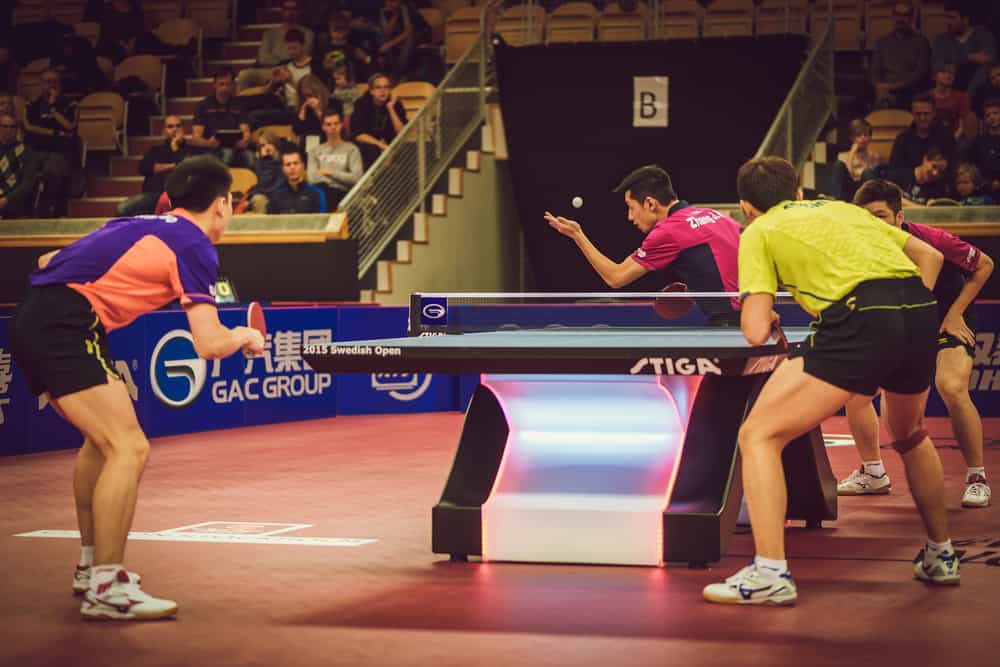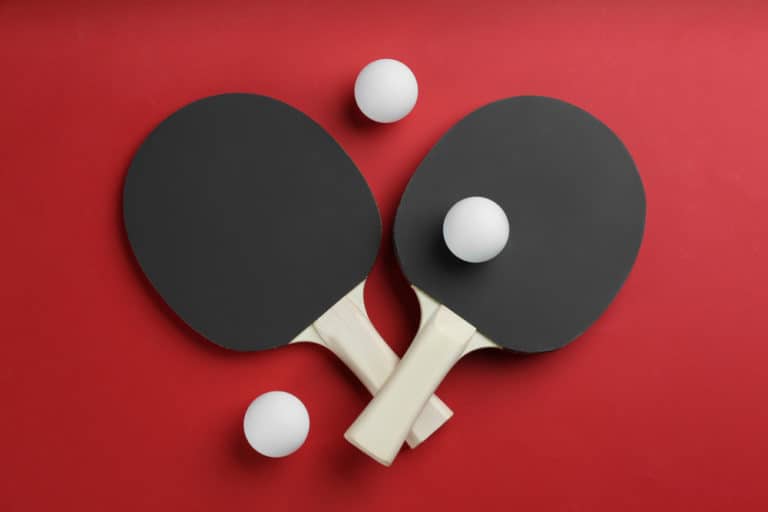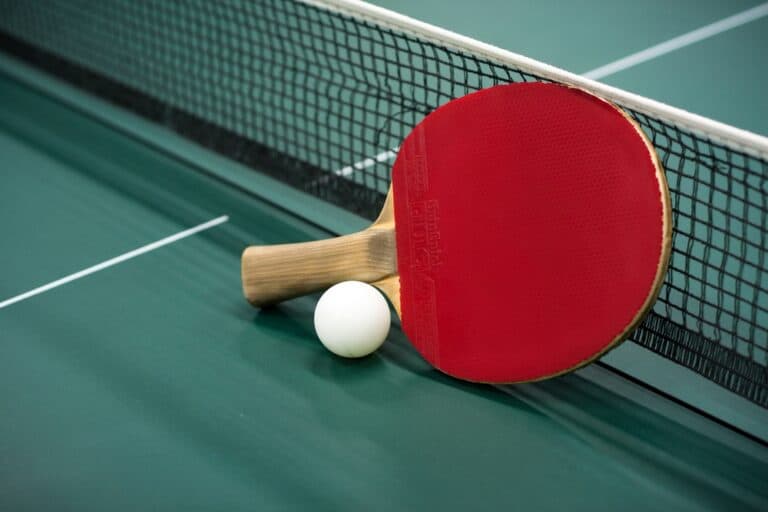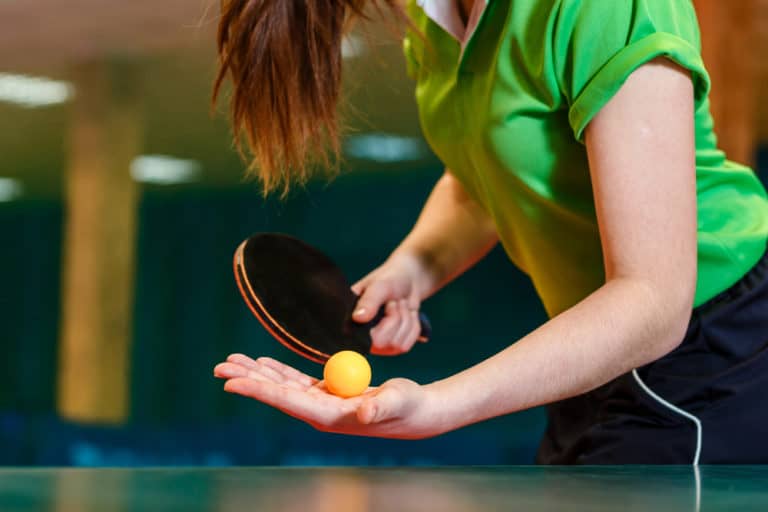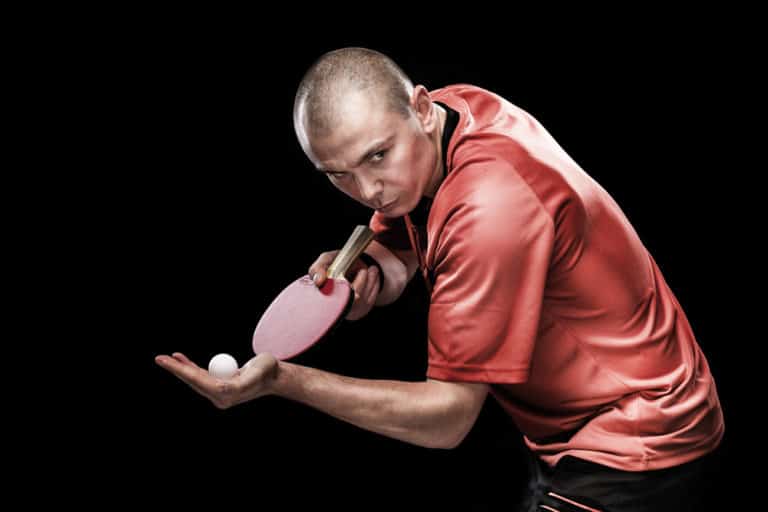Who Serves In Table Tennis Doubles?
I played quite a lot of singles table tennis when I was in high school. During a recent vacation, we found an outdoor table in a park and decided to have a game of doubles but couldn’t figure out who would be serving. So I set about trying to find out.
The person who serves first in table tennis doubles is decided randomly, usually by a coin toss. The person serving first will serve for 2 points to the same member of the opposing team. After that, the receiver becomes the new server. The partner of the one who was serving becomes the new receiver.
Let’s take a closer look at who serves in table tennis and see if there are ways to use your doubles service to win more points.
Who Serves In Table Tennis Doubles?
The 2003 table tennis rule change where the service alternates between sides every two points applies to doubles just as it does to singles table tennis. The difference with doubles table tennis is that the service also alternates between players on the same team each time they have the service.
When you have the service, you will stand on the right side of the table and play both of your services diagonally to the same opponent. The receiving player is therefore standing on the right side of the table from their perspective.
Once you have finished your two services, swap sides with your partner. The opponent that you were serving to will now be serving and your partner will be the new receiver.
Because you and your partner alternate shots during a rally, this rule effectively means that you will be playing all your shots to the same opponent for the entirety of the match. By this, I mean that all of your services will be to the same opponent, and during each rally, you keep playing all your shots to that same opponent.
How do you decide who serves in table tennis?
At the start of a match, players need to decide who serves first and who receives first. The ITTF rules state that the choice of which team will serve first must be by some sort of random draw such as a coin flip. The team that wins the random draw can choose whether they wish to serve or receive first.
The choice of whether to serve or receive first has some tactical considerations that must be taken into account. If the set goes to a 9-9 tie, the team receiving first will have the service for 2 points and a chance to close out the set. The team serving first won’t have the same opportunity if the score becomes 10-10 (deuce). When the score is 10-10 each player has the service for only one point until the end of that set.
There is an instance where it can be a clear advantage to be the team receiving first. If you know who is clearly the stronger player in both your team and the opposing team then you will be able to dictate the sequence of play for the entire match by receiving first.
If the stronger player of your opposition team elects to serve on the first point, have the stronger player on your team receive. Likewise, if the weaker player of your opposition team serves first, have the weaker player of your team receive. This strategy will ensure that the stronger player of your team will always be playing to the weaker player of your opposition, giving your team a clear advantage.
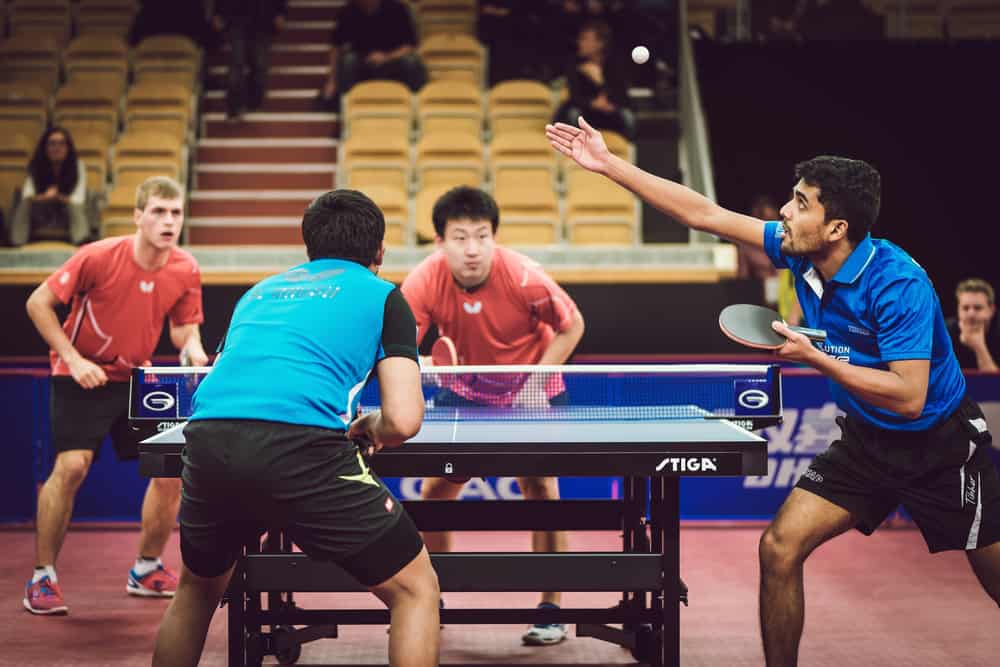
What determines who serves in casual table tennis games?
As we have seen, there must be a random selection of who gets to serve or receive first in competitive/tournament games of table tennis. This is usually done by a coin toss. However, in casual games, the first serve is often chosen by “volley”.
Choosing which team has the service by “volley” involves playing a practice rally of more than three shots. The winner of that practice rally is deemed to have won the “volley” and serves first, or at least that is how things worked in all the casual games I have played.
A friend of mine who plays a lot more casual table tennis than me told me that winning the “volley” is the same as winning the coin toss and that team has the option to choose whether they want to serve or receive.
How Many Serves In Table Tennis?
In table tennis, each player has one service per point. That single service gets repeated in the case of a let point, where the ball clips the net and still lands in play. Each player serves for two points before the service passes to the opposing team. This means that by the time that 8 points have been played in a game of doubles table tennis, both players on both teams would have had the opportunity to serve for 2 points.
This same pattern continues until one team scores 11 points, with a minimum of a 2-point advantage. If the score becomes tied at 10-10 (deuce), the system changes to where each player serves for 1 point until one of the teams has a 2-point advantage.
What Are The Service Rules In Table Tennis That Are Different For Playing Doubles?
The one rule of the service in table tennis that is different when playing doubles is that the service must be on a diagonal and always on the same diagonal.
The player serving always serves from the right side of the table and serves along the diagonal across the table with the ball bouncing in the service block nearest the server before crossing the net to bounce in the service block furthest away from the server.
When serving in table tennis doubles, both service points are served along the same diagonal with the same opponent receiving both service points.
After each two service points, the service changes between teams and rotates through the players so that after 8 points each of the four players has been able to play two service points. In spite of rotating the service among the four players playing the doubles match, all service points are played on the diagonal from the right side of the table.
If the score becomes deuce (10-10), each player serves just one point until one of the teams has a two-point lead. In this case, the service points are still played on the same diagonal from the right side of the table to the same opponent. The rotation is done in the same way so that each player has had a chance to serve by the time 4 points have been played – unless one of the teams has won the game by gaining a two-point lead.

